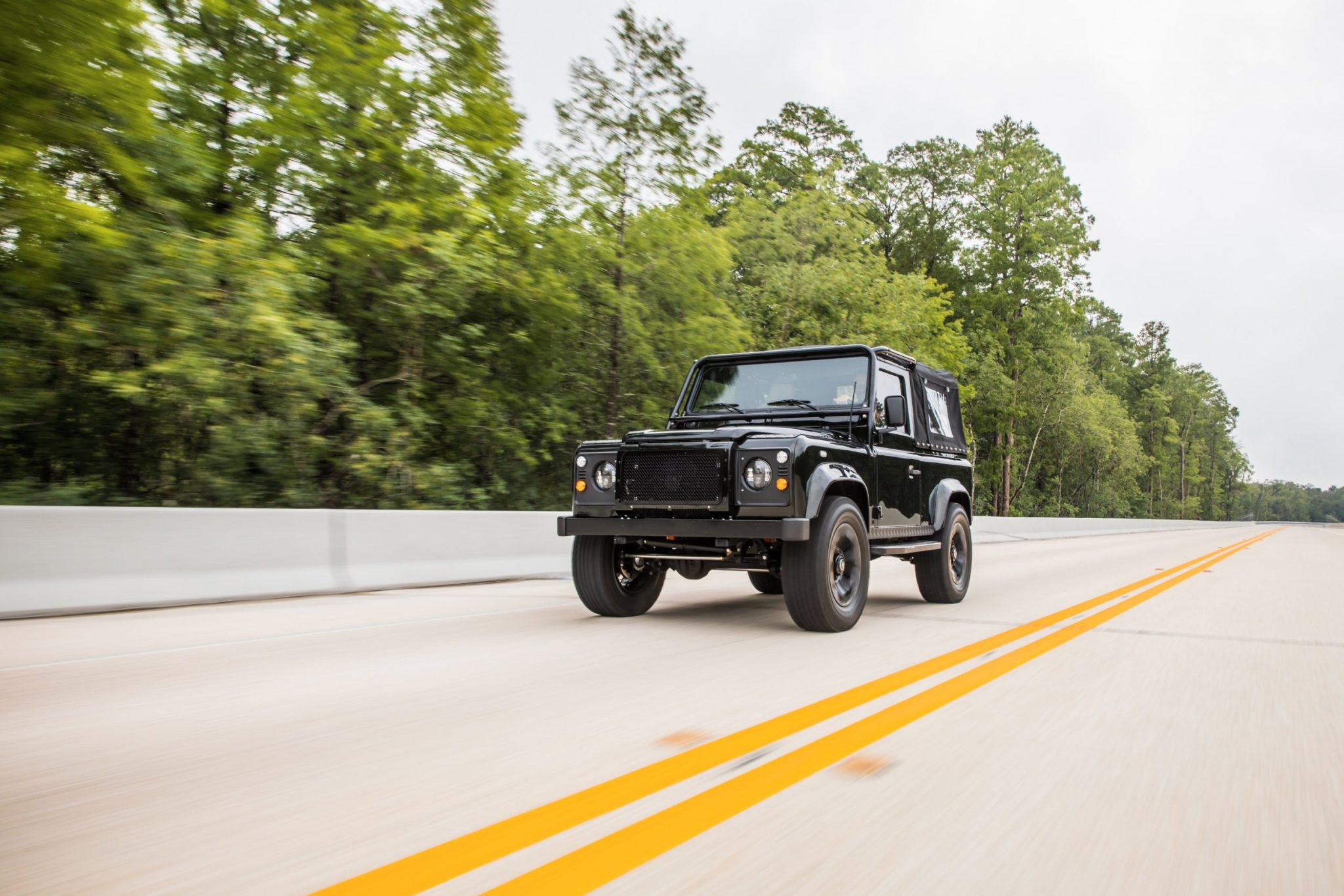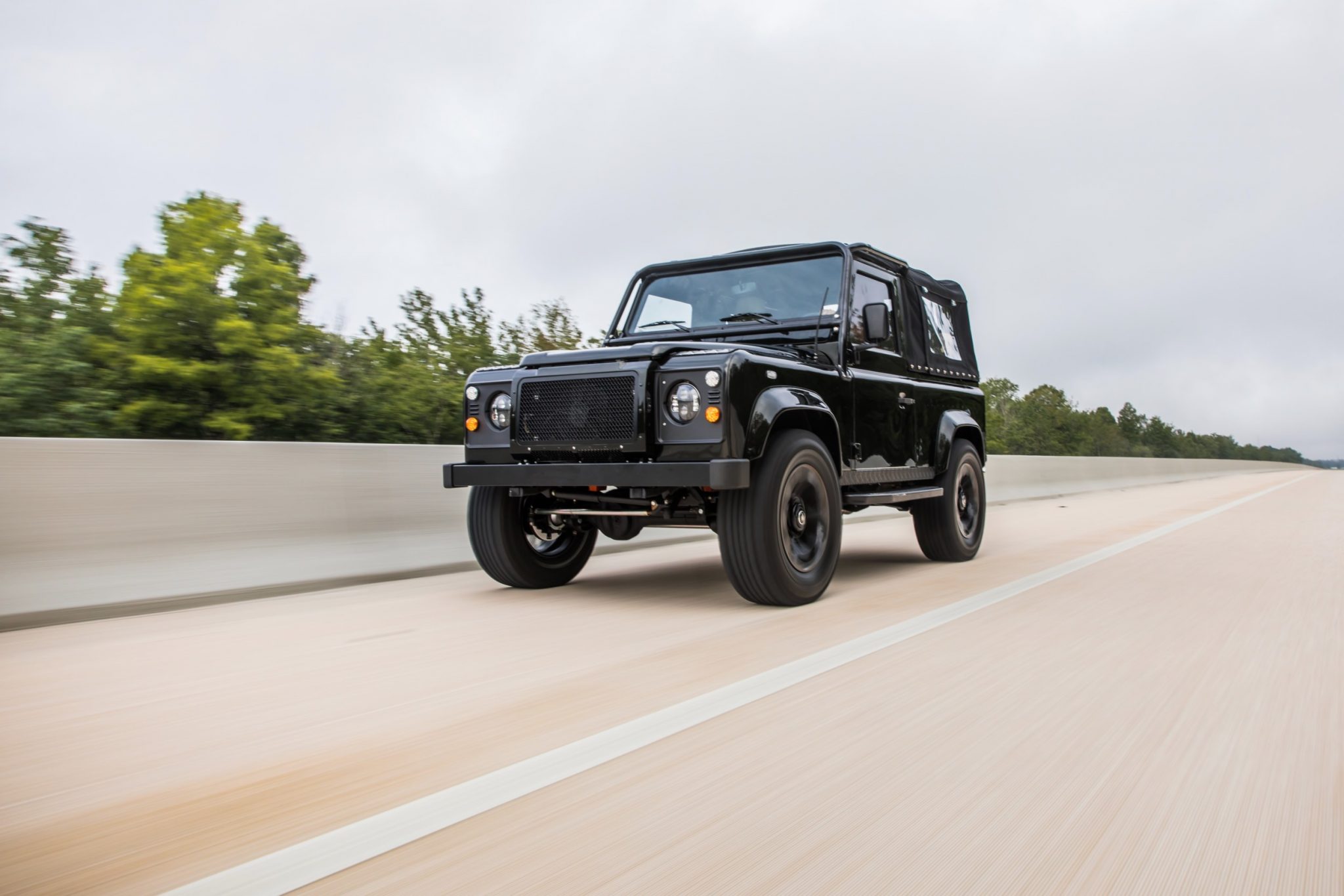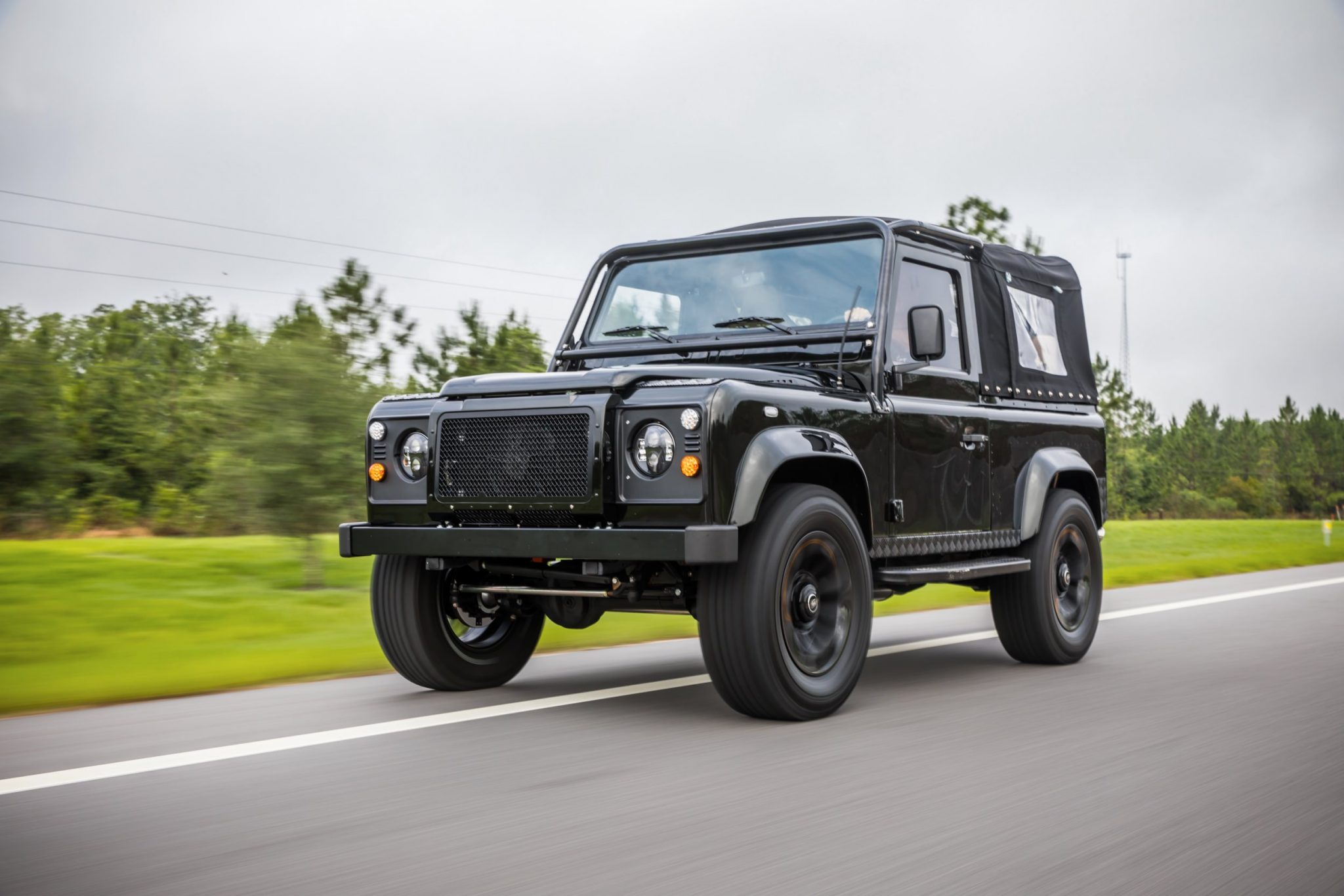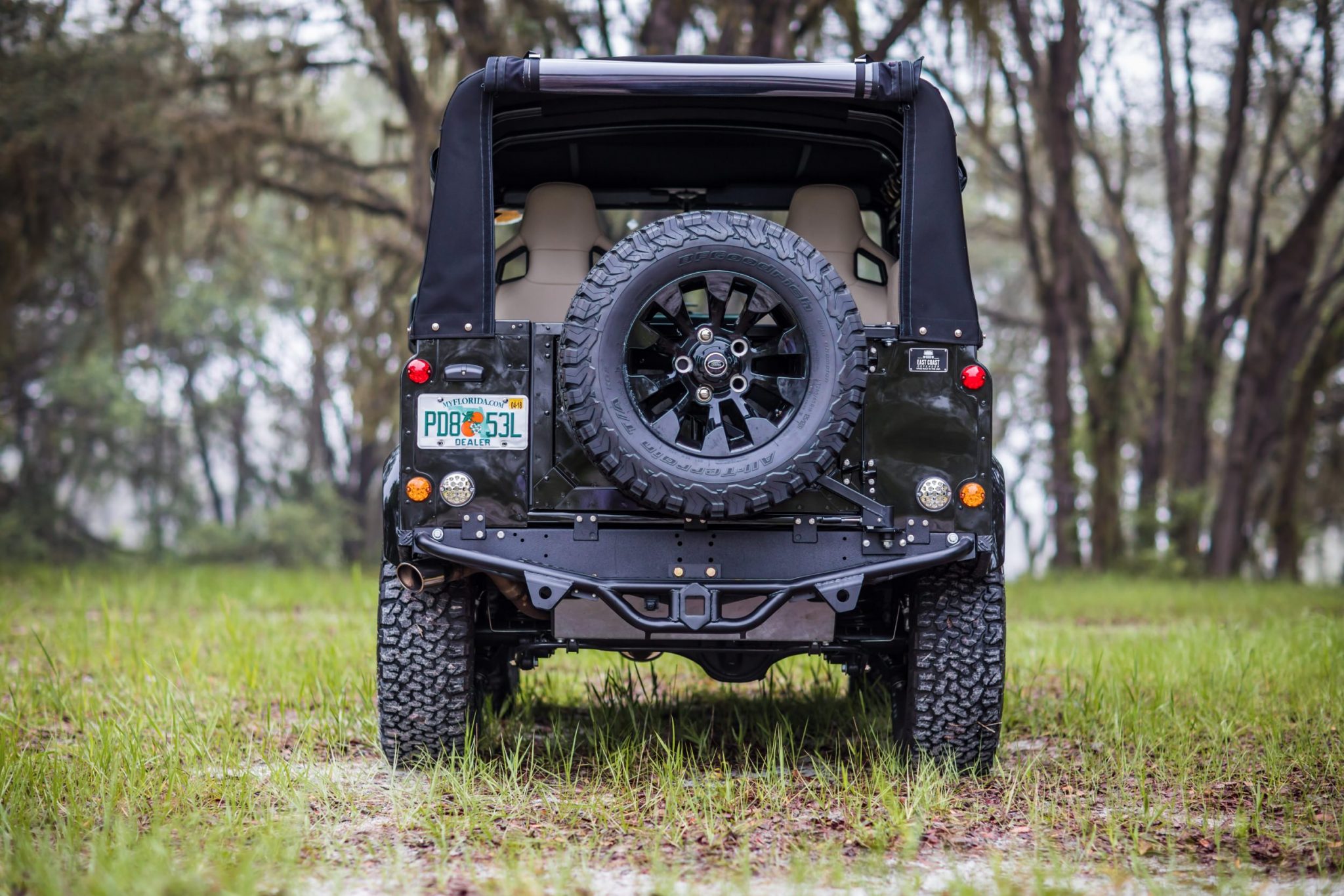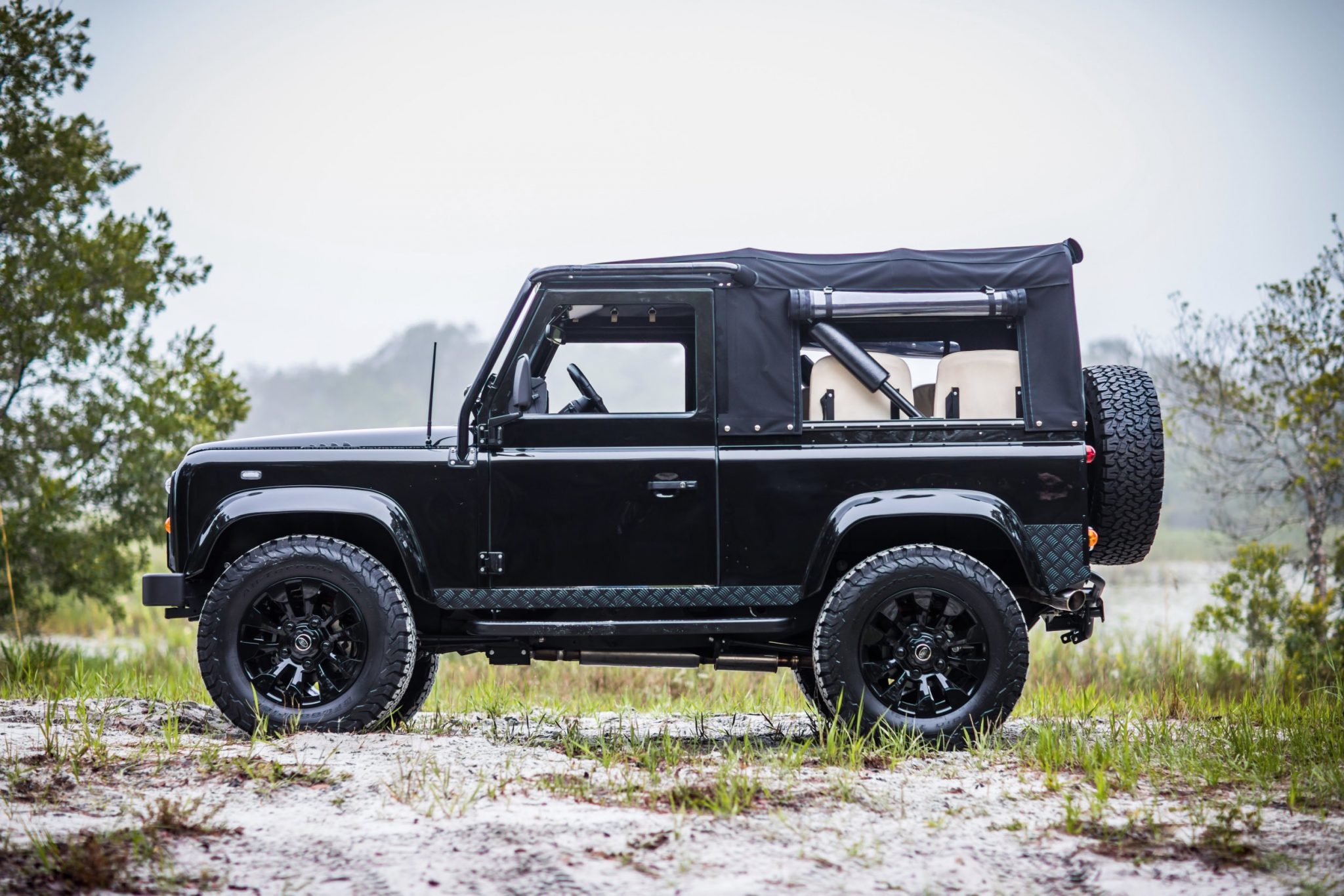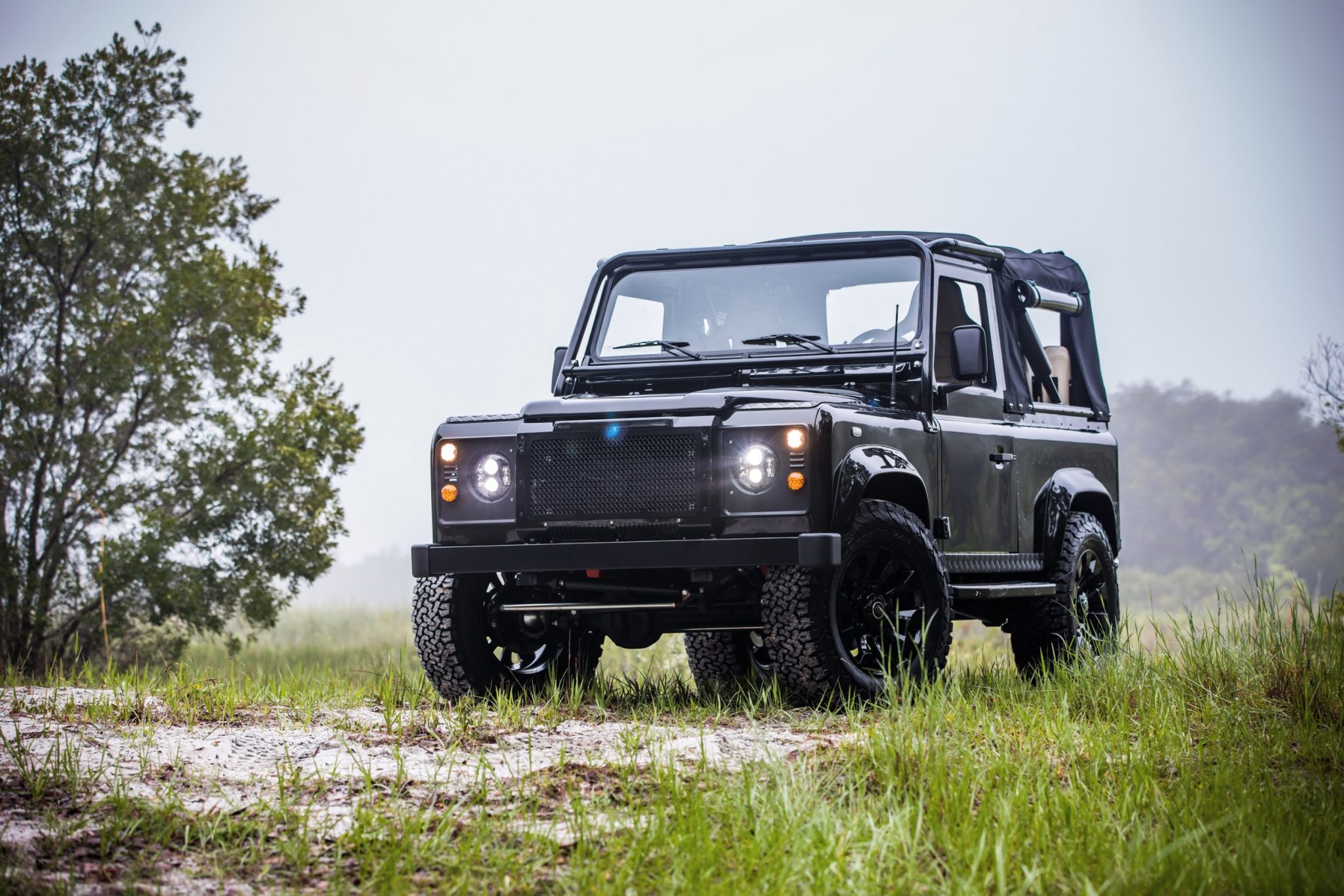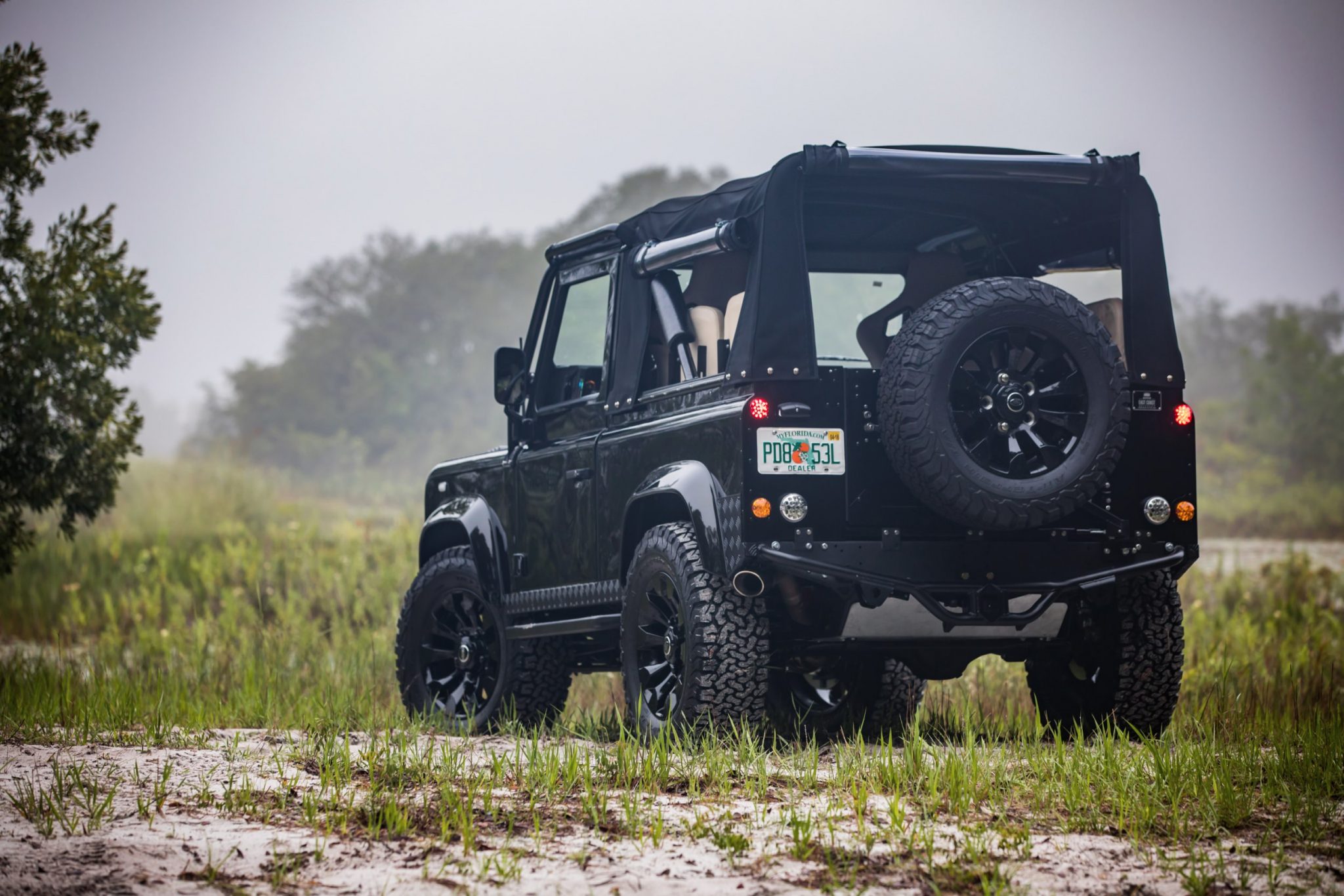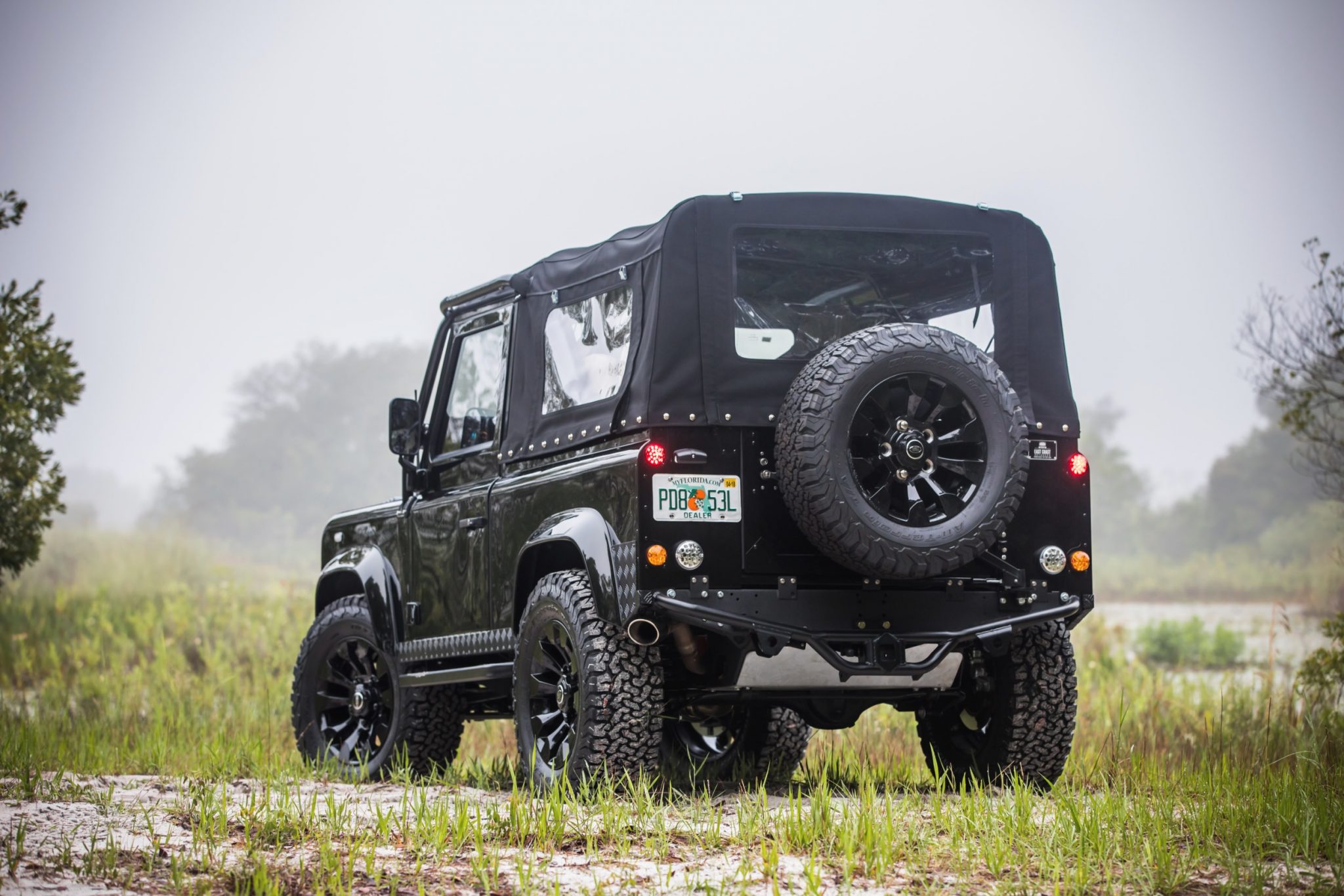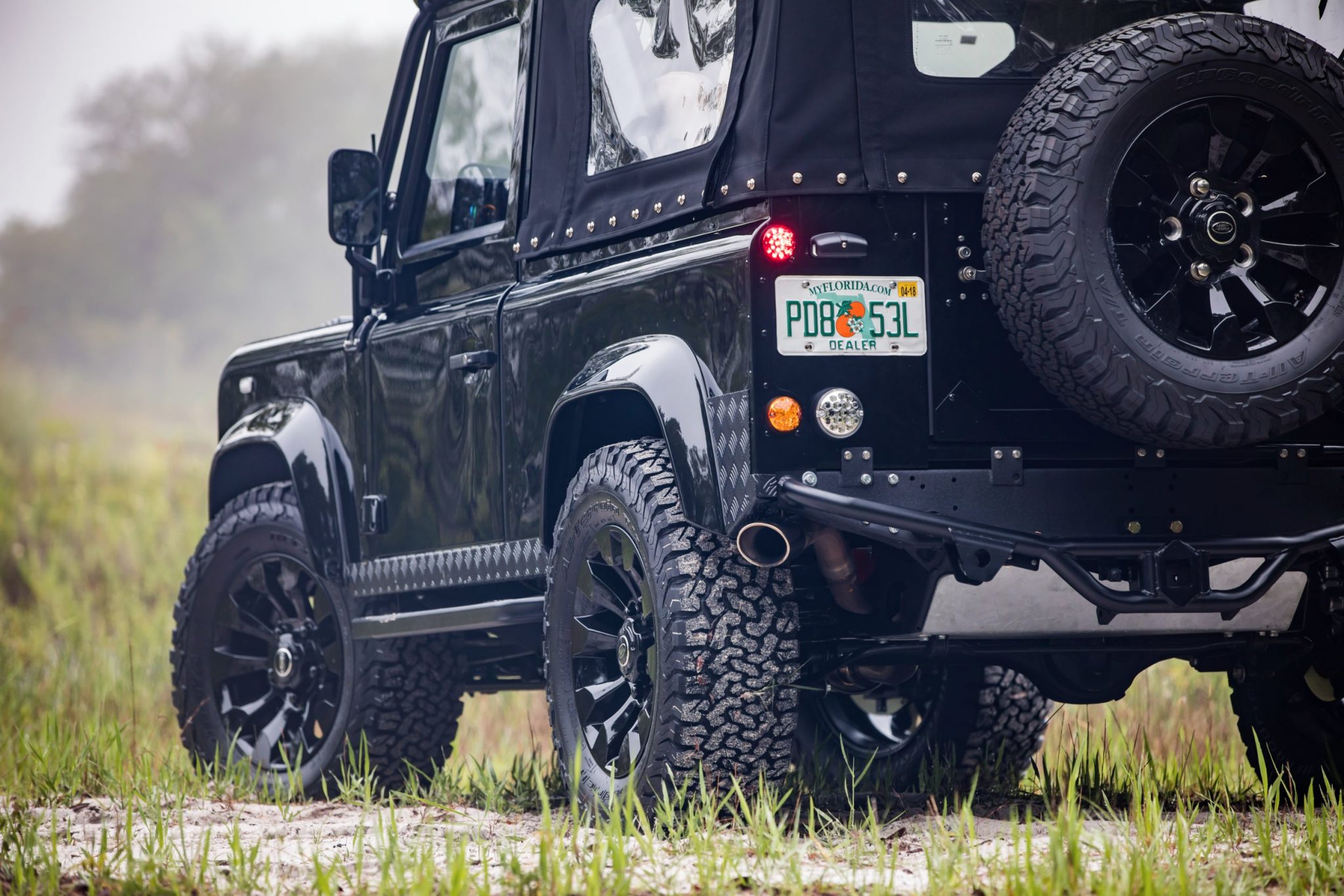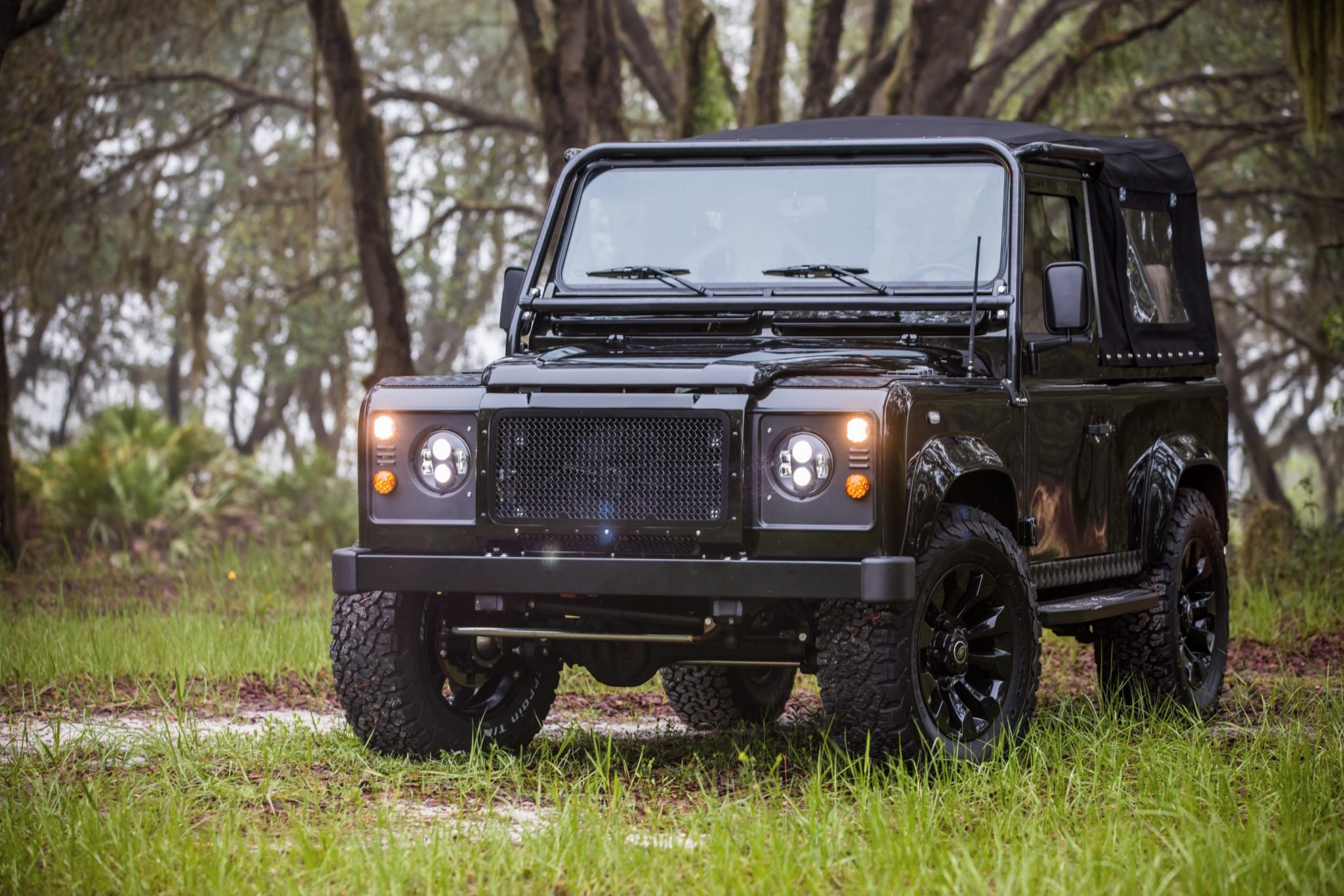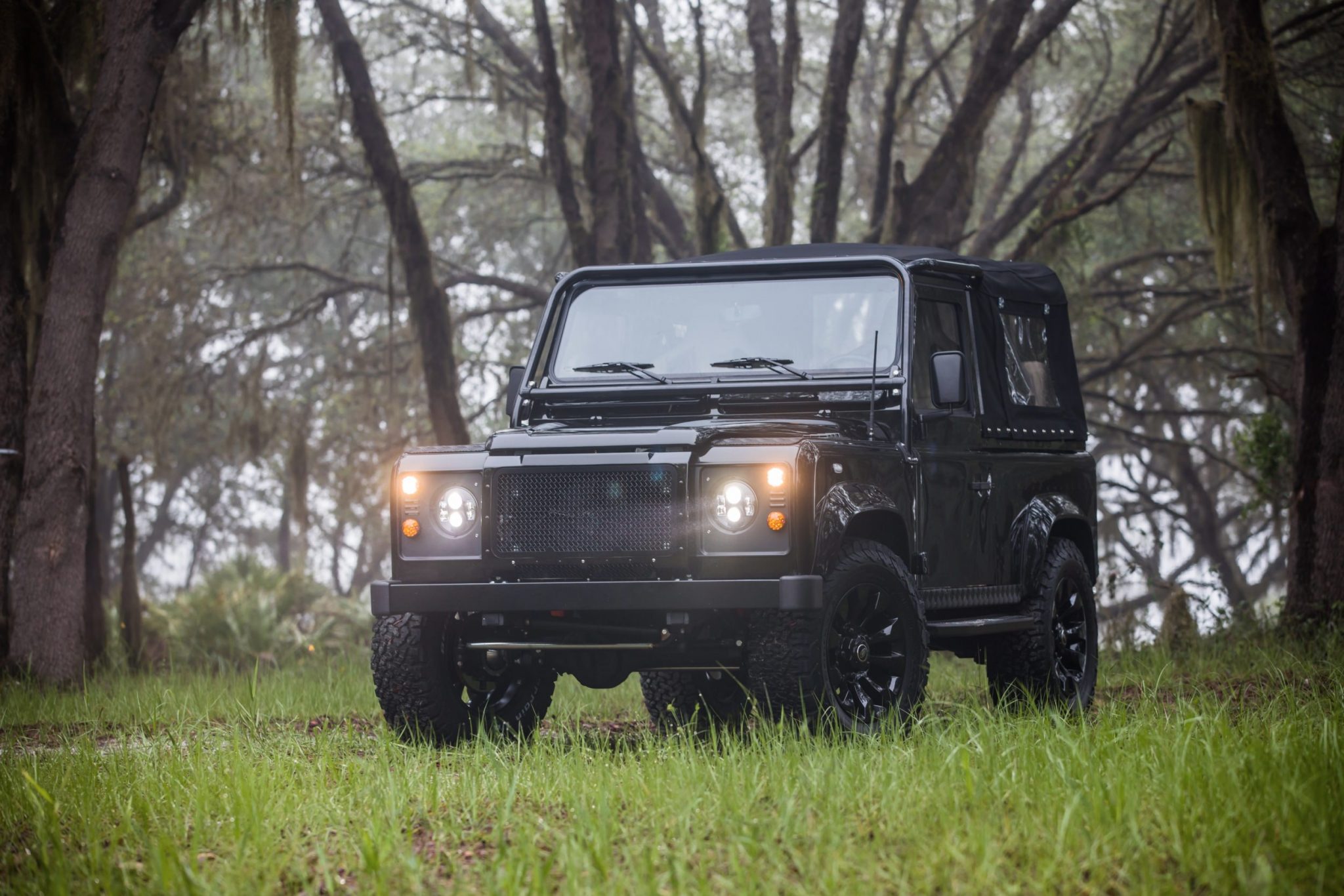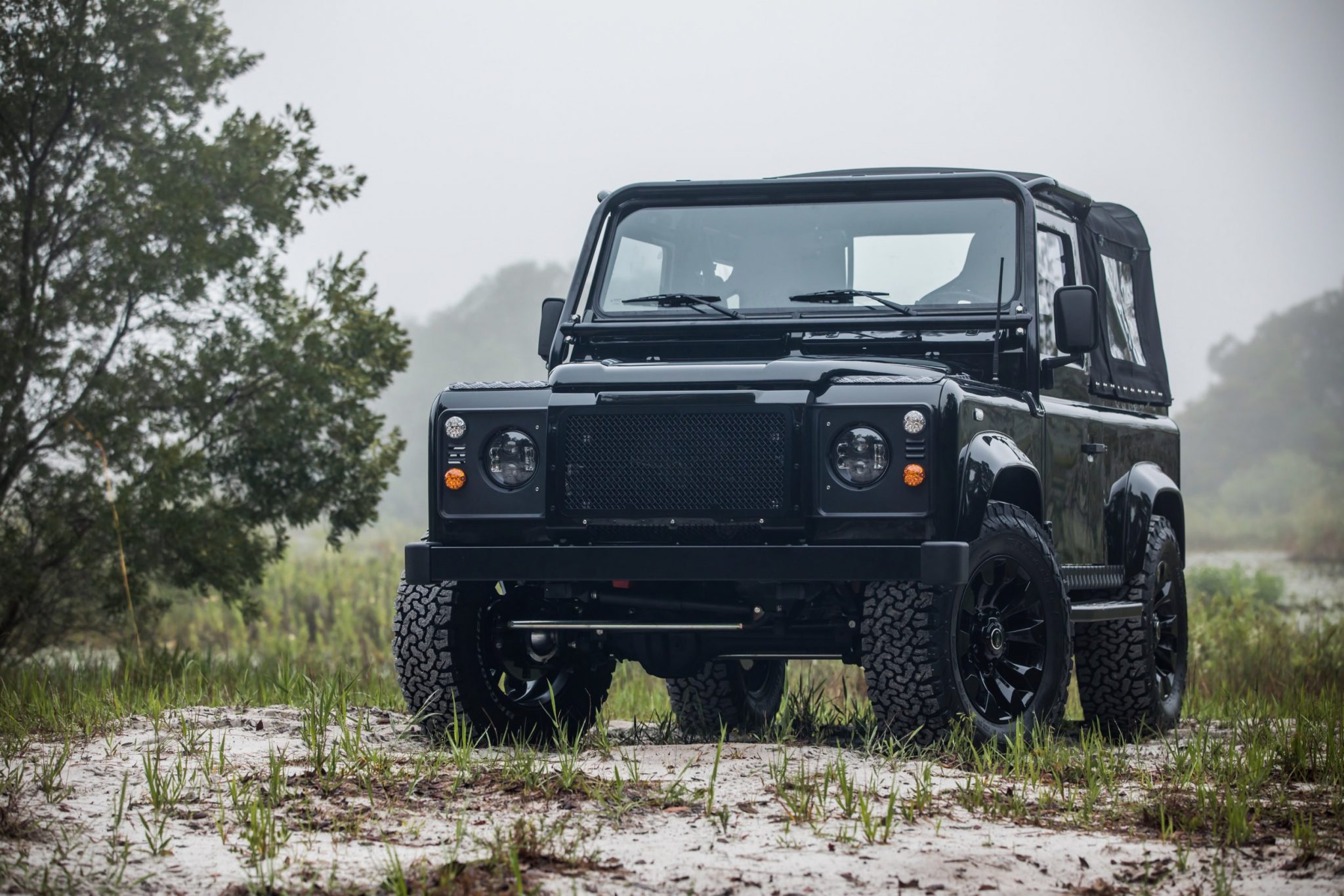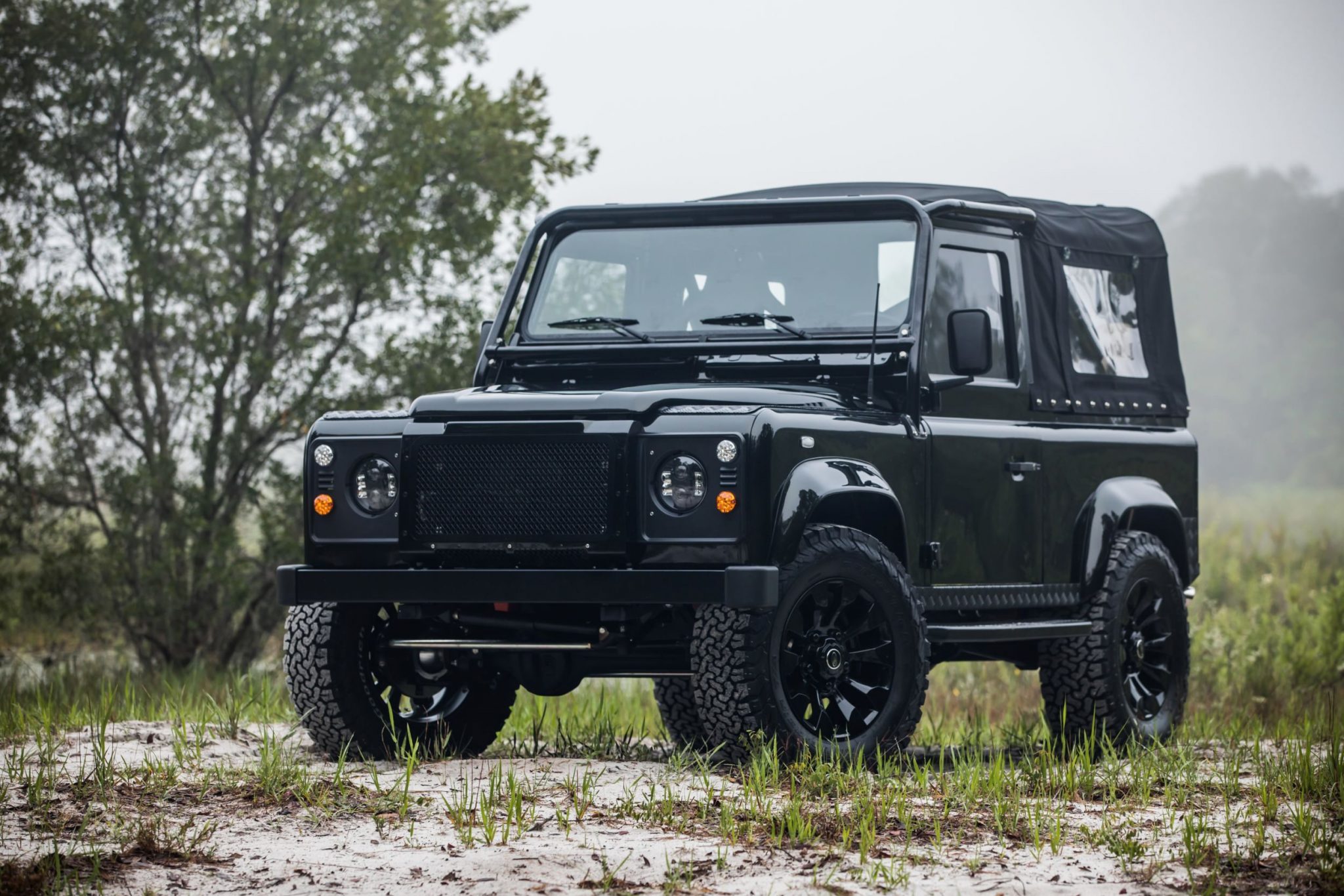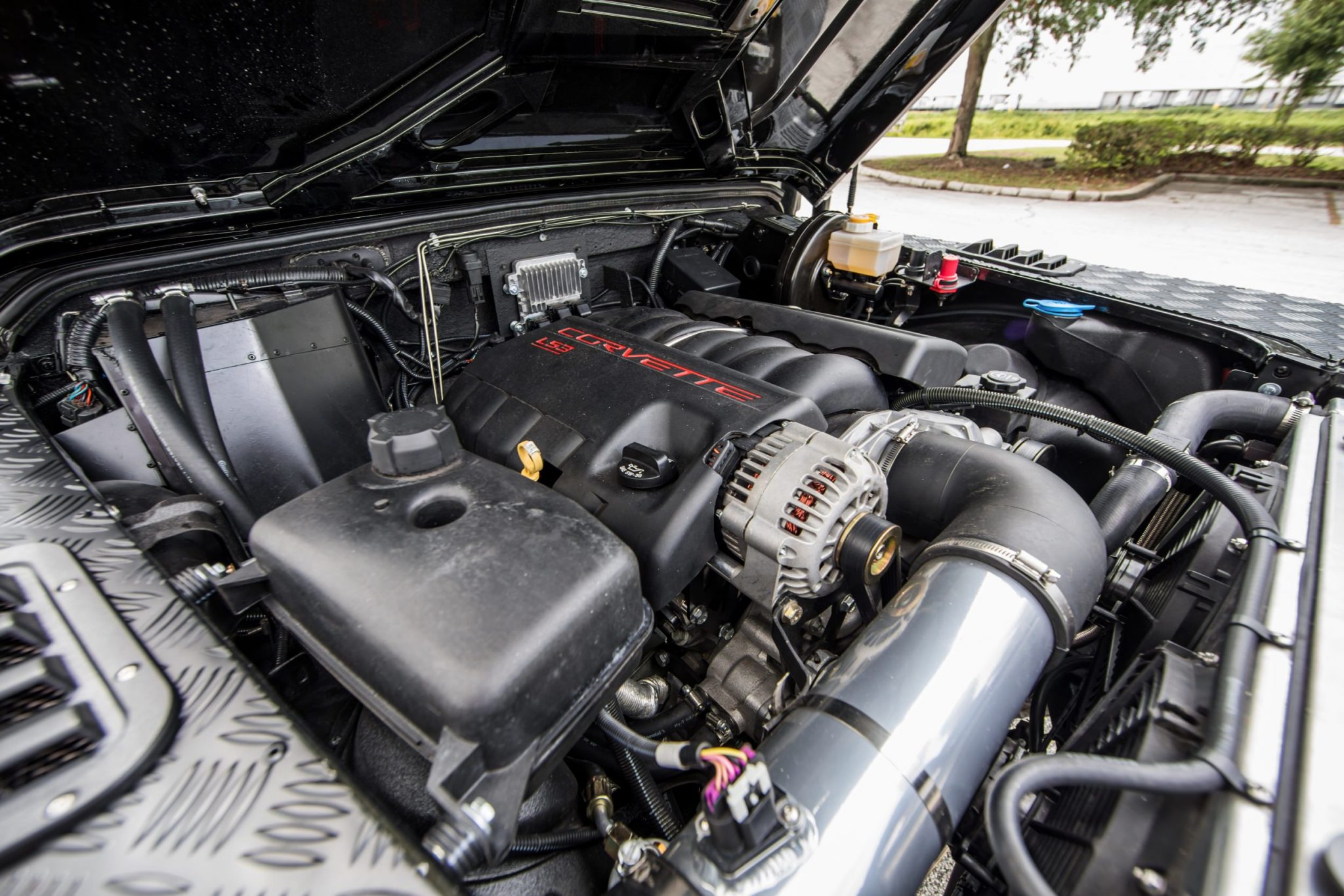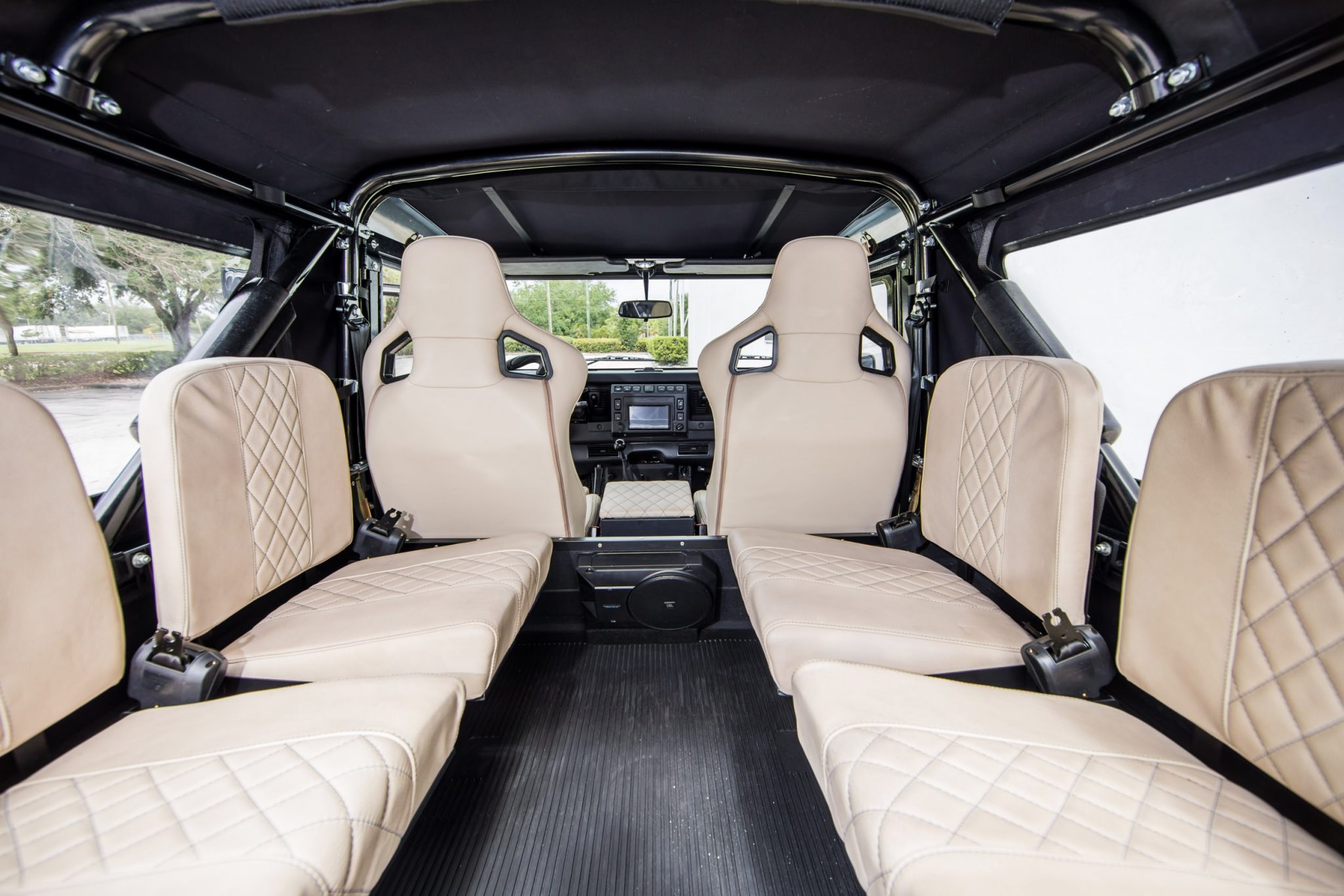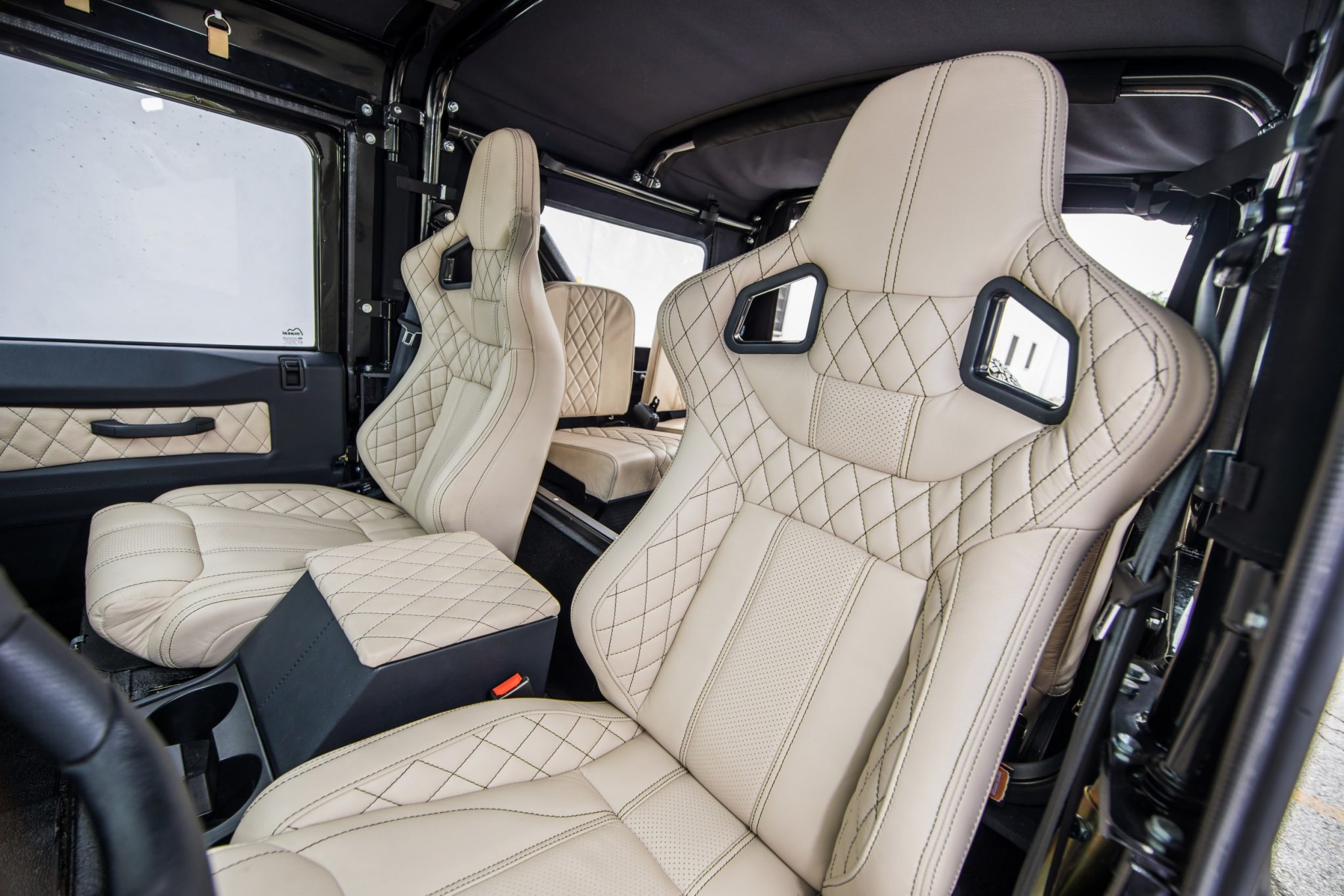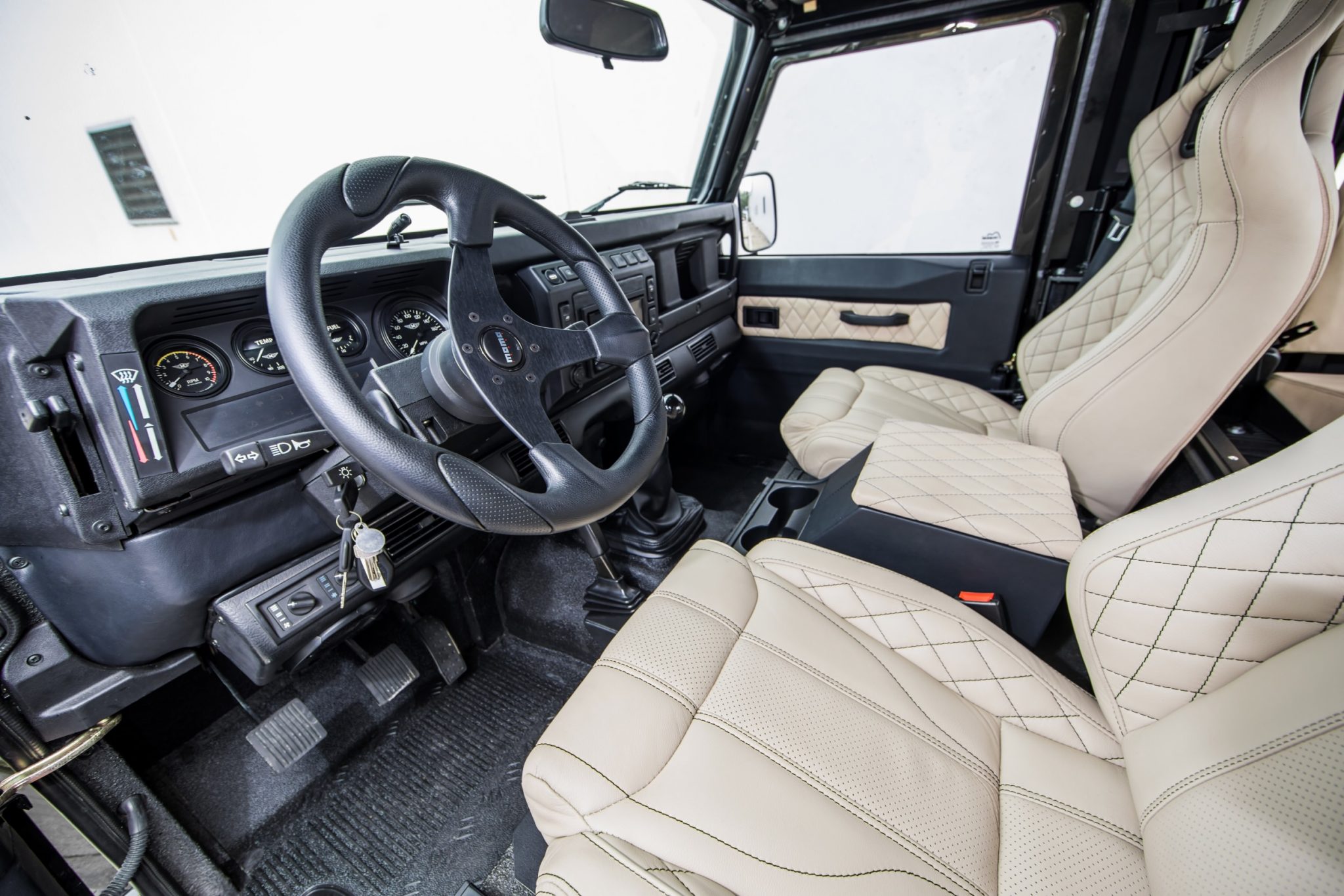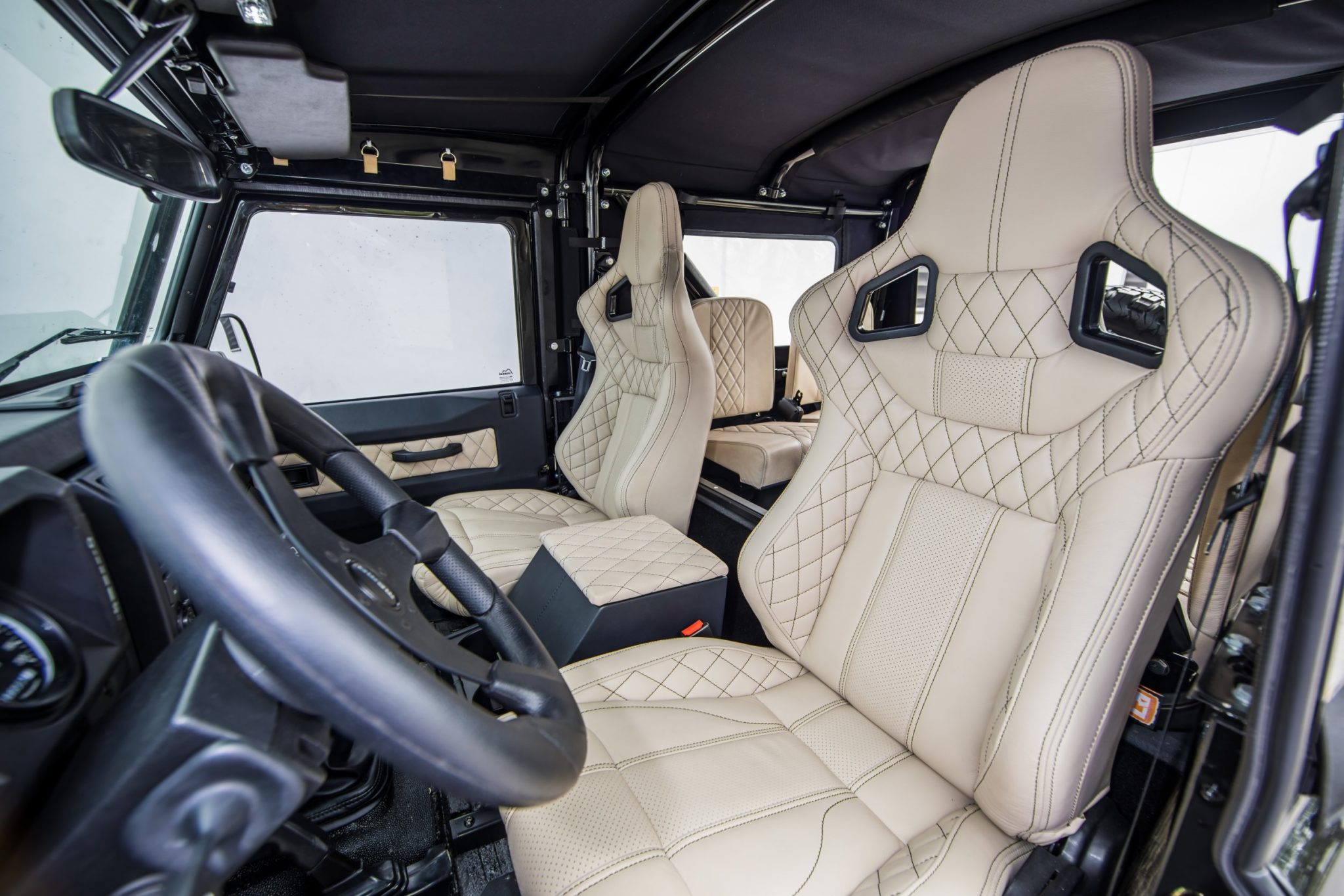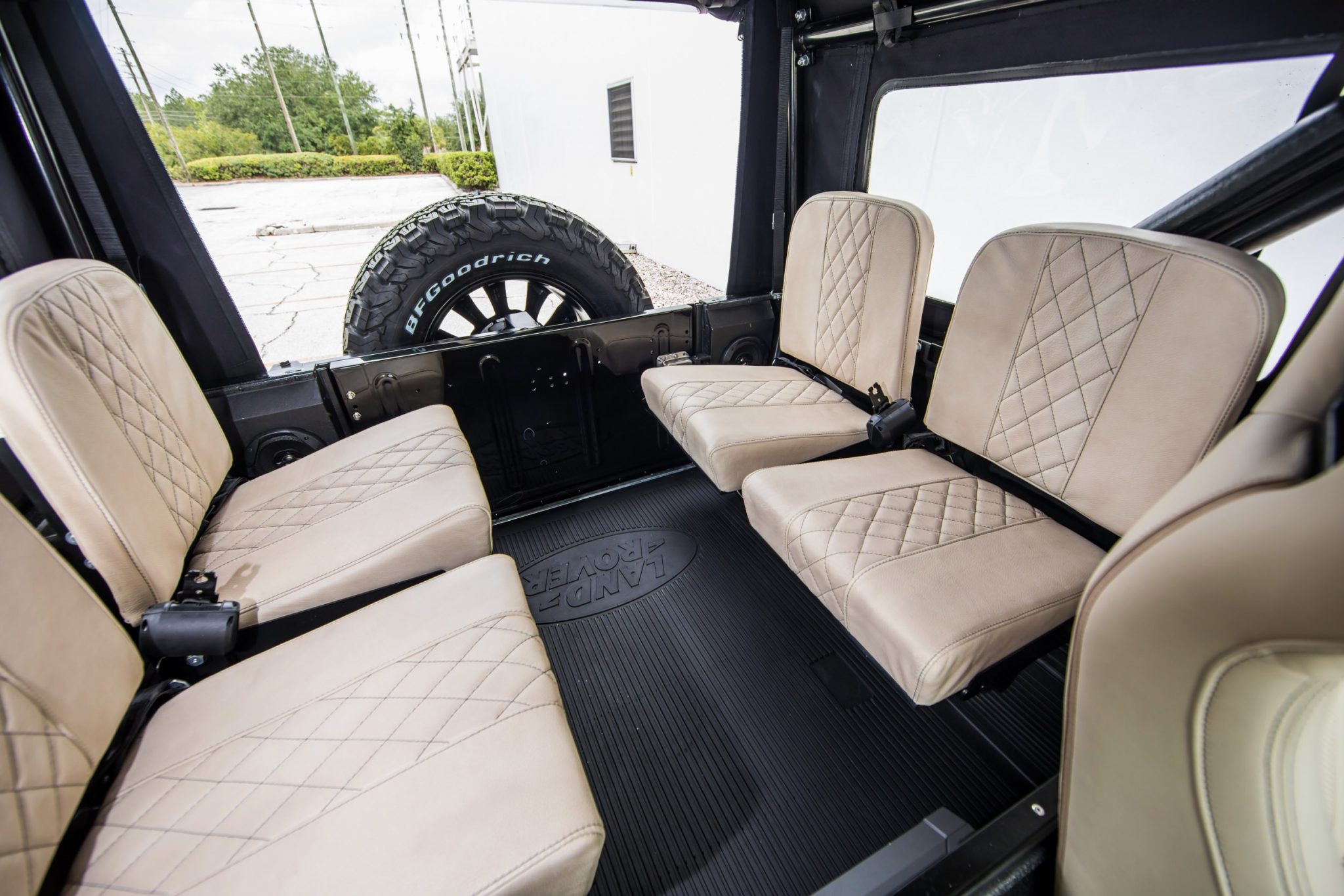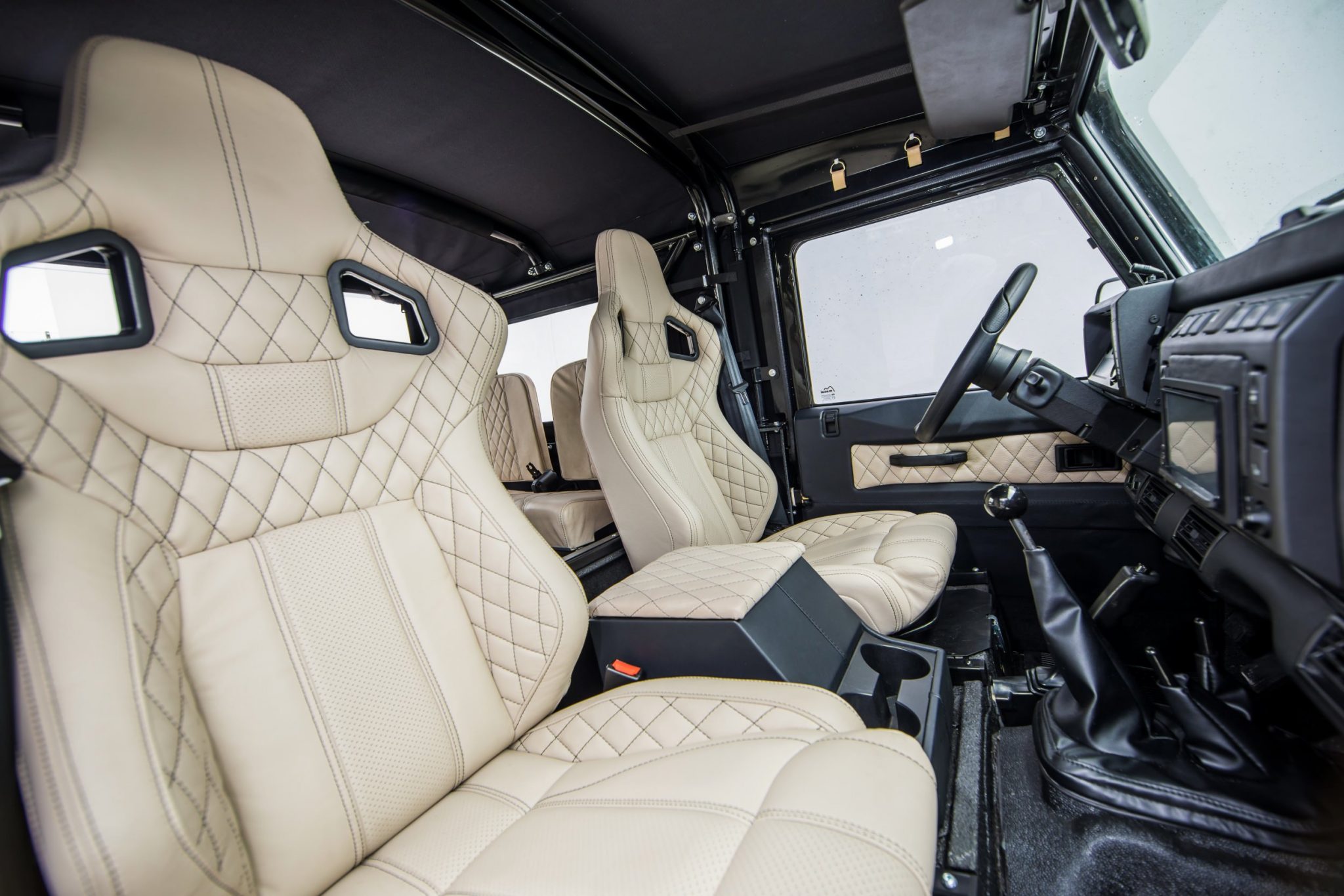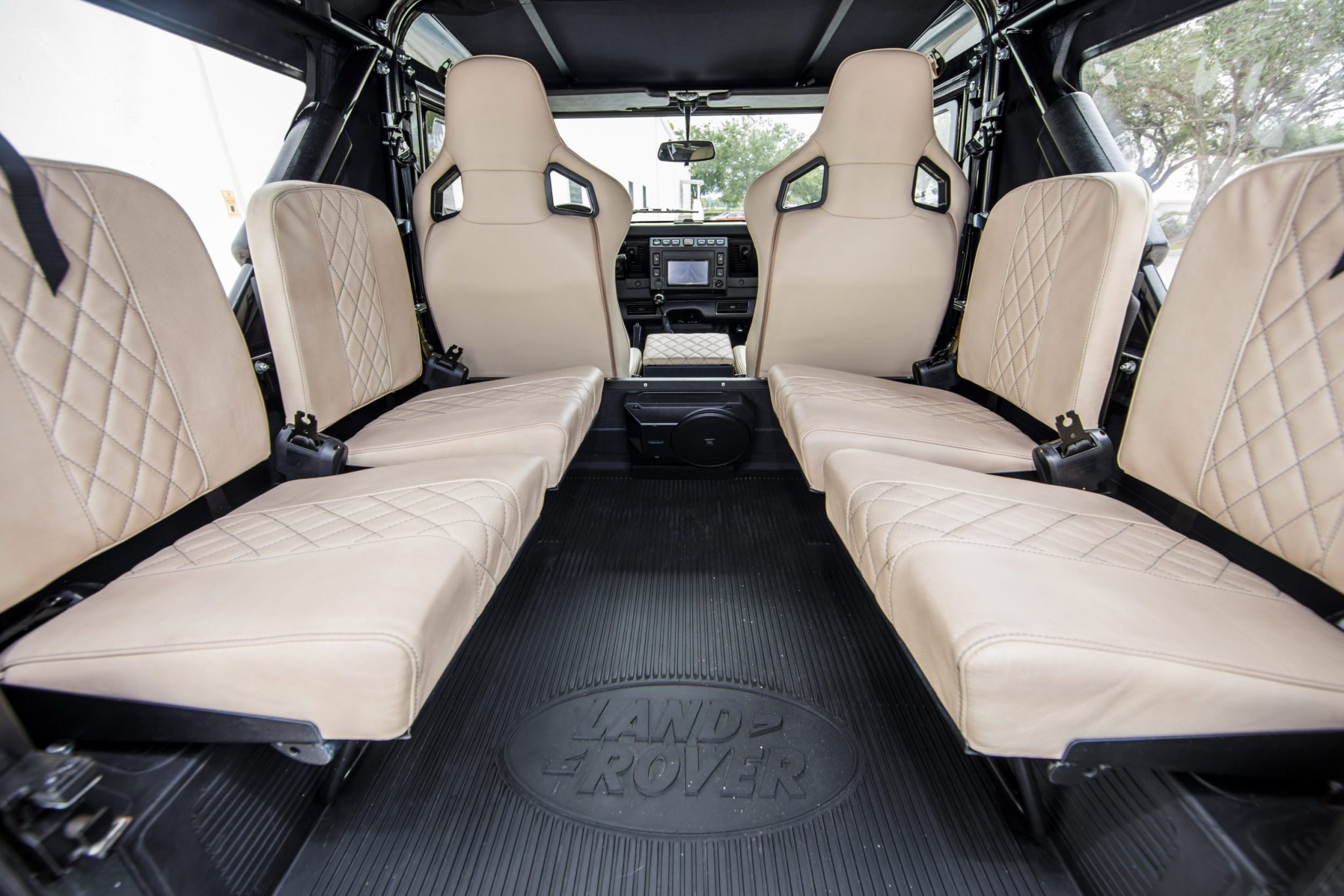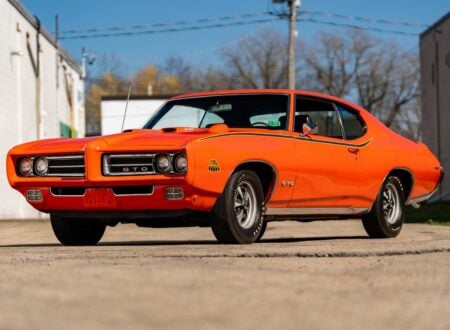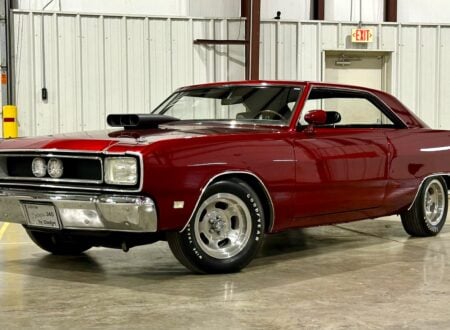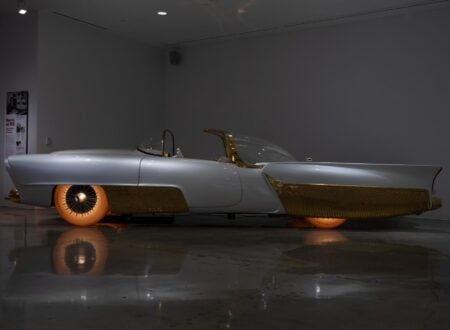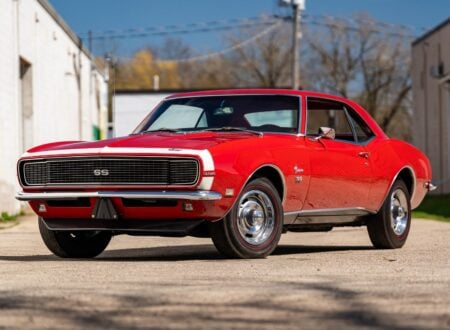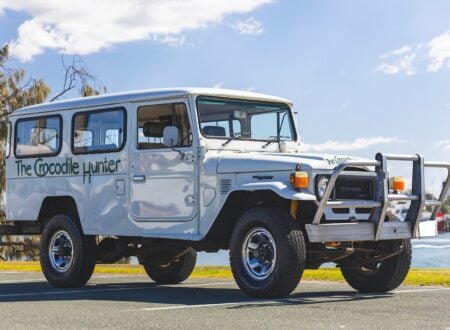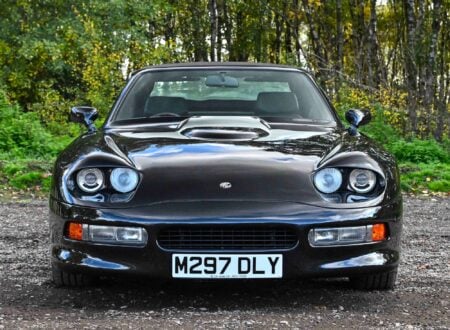Carroll Shelby might not have been the first person to drop an American V8 into a British vehicle, but he’s by far the most famous.
Over the years there have been countless examples of Brits and Americans getting their heads together and turning out some genuinely remarkable automobiles – and this Land Rover by East Coast Defender is an excellent modern take on the partnership.
The team at ECD have managed to squeeze a 430 hp Corvette V8 into the Defender engine bay, then coupled it to a new 6-speed Chevrolet T56 manual transmission and an upgraded LSD transfer case to handle the additional power.
There aren’t many Land Rover Defenders that can do the 0-62 mph dash in under 6 seconds, and this is one of them.
A Brief History of the Land Rover Defender
The Land Rover Defender didn’t get that name until it had been in production for six years. By the early 1980’s Rover could see the writing on the wall for the Land Rover unless they could pull a rabbit out of the hat and create something that was completely new, and yet the same, all at the same time. The Land Rover was failing fast against the Toyota Land Cruiser and the Nissan Patrol in much the same way the British motorcycles had been decimated by the motorcycles of the Land of the Rising Sun such as Honda and Kawasaki. Rover decided to fight for market share, but wanted to keep the “new” model vehicle as similar to the much loved original as they could.
The first stage in creating this new Land Rover was to transplant the V8 engine and constant four wheel drive transmission from the Range Rover into an otherwise unmodified Series III Land Rover. The Series III Land Rover was much the same as Maurice Wilks original 1947 Land Rover Series I and as such it was not the most stable vehicle in which to drop a V8 engine, and it had brakes that didn’t so much stop the vehicle as cause it to “lose momentum”. To avoid any propensity for a V8 Series III Land Rover owner to act like a lemming the engine was de-tuned to keep top speed at a modest level. This vehicle was the 1979 Stage I V8. It was a step in the right direction but, given that the Land Rover’s bodywork was aerodynamic in exactly the same way that a cardboard box isn’t, the Stage I V8 proved to be a thirsty little madam if pushed along at a decent highway speed.
By 1983 Rover’s boffins had been busy playing the sharp pencil game and had come up with a new model that was able to be a stable vehicle in which to install the 3.5 litre V8 engine. The new Land Rover was called the One Ten and was built on the long wheelbase chassis. The vehicle featured wider track axles and the original leaf spring suspension was discarded in favour of a much more sophisticated coil spring system. Brakes were improved also and the body changes were subtle including a higher one-piece windscreen. The wider track necessitated making the body wider and Land Rover’s engineers chose to simply add extended wheel arches in rally car style to make the new model look stable and purposeful.
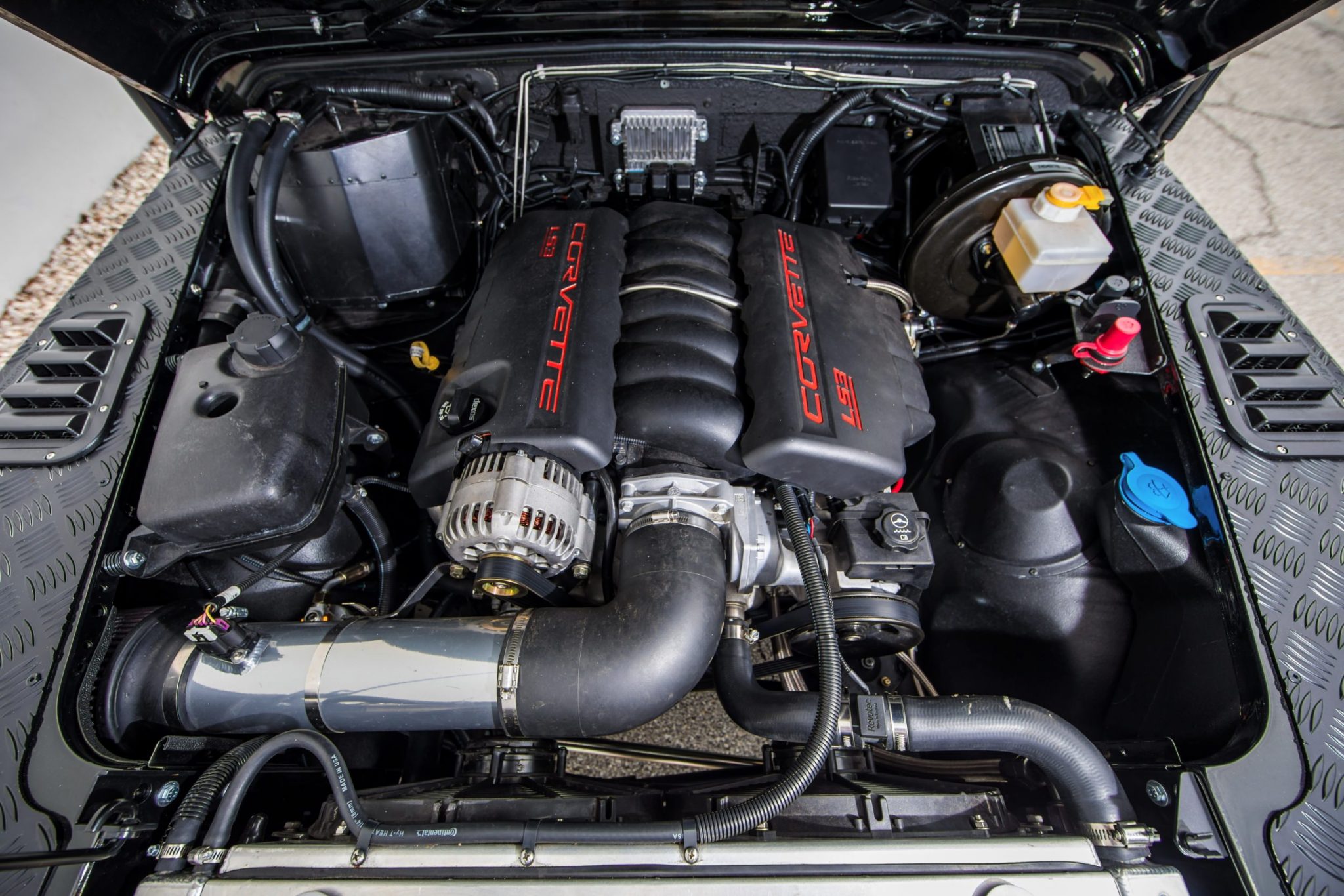
The new bodywork was much the same as the original slab sided Land Rovers, still being “Birmabright” aluminium panels on a steel frame, and so it was no more aerodynamic. Those on champagne budgets who could afford to run the V8 would do so but those on “beer bottle” budgets were offered the choice of the older 2.25 litre four cylinder Land Rover petrol and diesel engines. These engines were improved by upgrading from three to five main bearing crankshafts, and the diesel unit was increased in capacity to 2.5 litres as production proceeded.
The 1983 long wheelbase Land Rover One Ten was followed in 1984 by its short wheelbase sibling the Land Rover Ninety. These were to remain until Land Rover introduced the Discovery and decided to give the Land Rover models the name “Defender” in 1989.
The Defender offered more comfort than its Series I, II and III siblings and better sound proofing. It even came with optional air-conditioning of the refrigerated type. Series Land Rover owners will of course know that original Land Rover “air-conditioning” meant opening the flaps under the windscreen to allow outside air to flow through the cab, so proper air-conditioning was a big improvement over that.
The Land Rover Defender remained in production until 2016 and, despite being based on a 1947 agricultural design, managed to earn itself a significant “coolness factor”. With the Land Rover Defender now out of production it remains to be seen if Land Rover will be able to once again pull a rabbit out of the hat and create a new model that retains the character and practicality of the original, but with genuine improvements that people actually want.
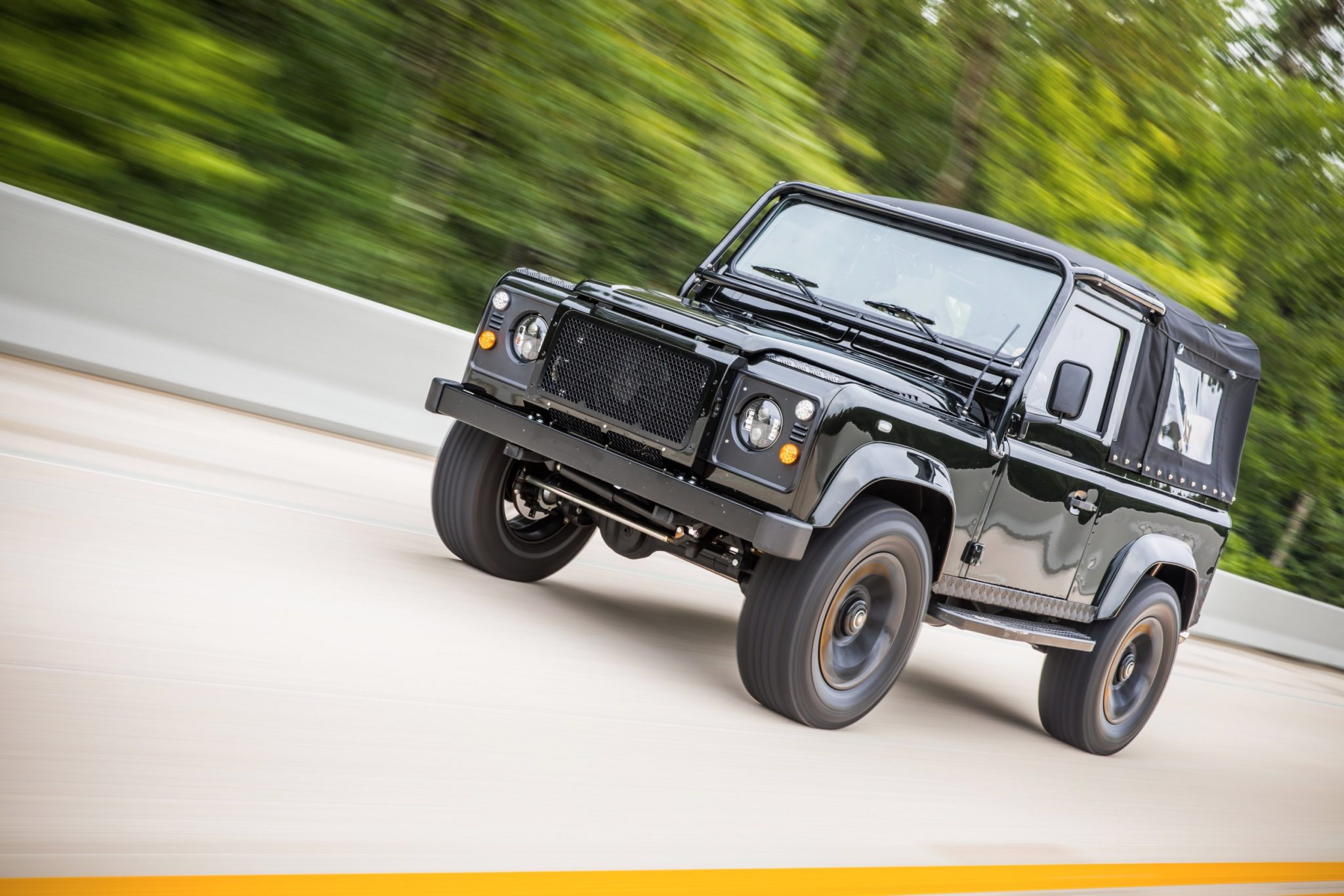
The East Coast Defender Corvette-Engined Defender
East Coast Defender is one of the pre-eminent Land Rover customisers in the USA, the company has 29 full-time employees and is made up of a mixture of Brits and Americans. They’re based in Kissimmee Florida, and they’ve built a significant number of bespoke Defenders – all of which are far quicker and more luxurious than any examples that left the Land Rover factory.
The Corvette-Engined Defender shown here is their most recent build, with 430 hp on tap it’s quick enough to embarrass many sports cars on the road, and off road it can sling mud half the length of a city block.
In order to improve breathing the LS3 V8 has a Borla exhaust fitted, there’s also a Ron Davis radiator to keep things cool. All brake and fuel lines have been replaced with stainless steel examples, and inside there are Classic Instruments Moal Bomber gauges. It has a full roll cage installed, as well as ivory leather Corbeau seats with black accent stitching, a Quark steering wheel by MOMO, and Porsche Dunkelolive metallic paint.
It’s riding on 18” Sawtooth wheels with BF Goodrich All Terrain KO2 tires, and it’s fitted with a Kenwood infotainment center with a backup camera, wifi, JBL speakers and a subwoofer.
If you’d like to read more about East Coast Defenders or order your own, you can click here to visit their website.
Follow East Coast Defenders on Facebook – Twitter – Instagram
